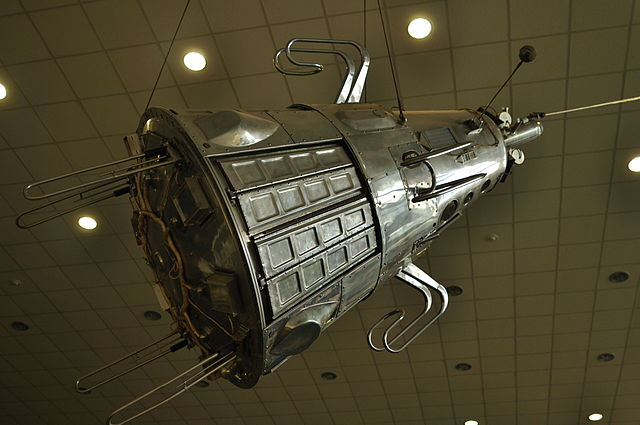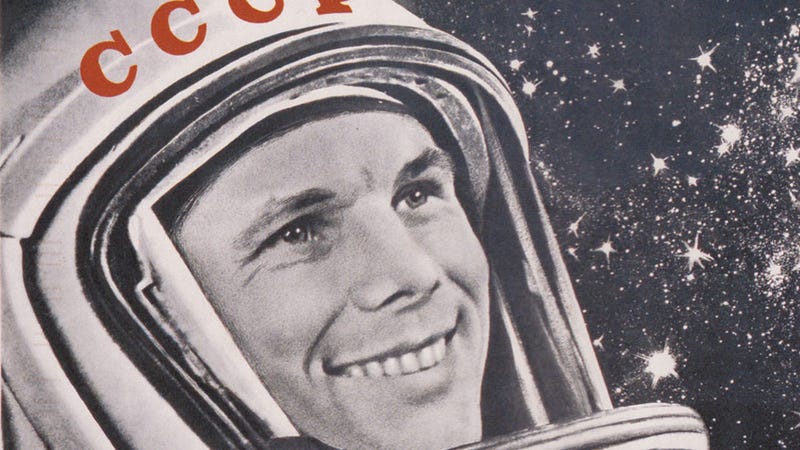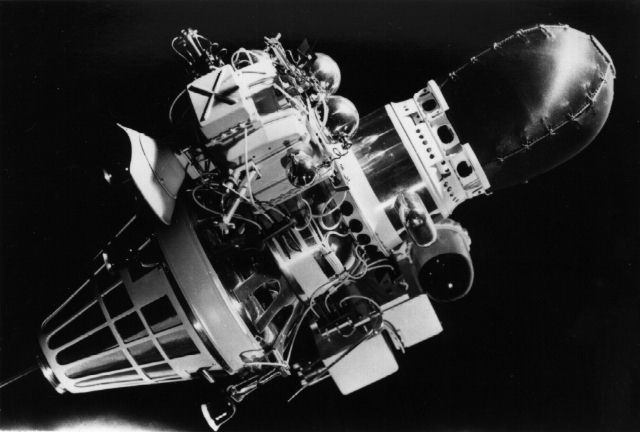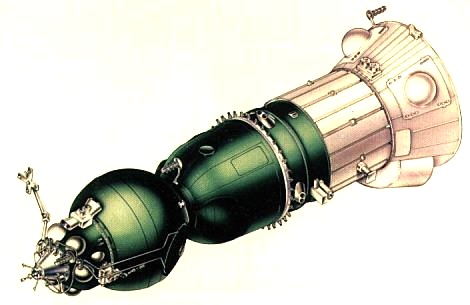Greetings, comrades, and welcome to “Long Live the World Revolution! a Soviet NWO AAR”
This is my first AAR, and English isn't my native language, so feel free to correct any errors.
In this AAR, I will play the Soviet Union form 1946 and assume its role as the vanguard of the World Revolution. The goal will be to make the whole world socialist, achieving the worker's revolution and ending capitalism by 2100. I'll write this from a pro-communist historybook perspective.
Without further ado, let's start !
Music advice :
INTRODUCTION :

“Leninism is Marxism of the era of imperialism and proletarian revolution” - Joseph Stalin.
The era of imperialism and proletarian revolution started in the late 19th century. With the evolution of capitalism into monopolistic capitalism, to ensure its survival, capitalism had to spread to the whole world, colonizing and plundering the entire world.
But its evolution also created the objective conditions for its end. In fact, the centralization and socialization of capital, the alienation of the impovered workers, the global oppression, led to resistance. Although reactionary at its early stage (Luddism, Utopian Socialism), it became a progressive force in the middle of the 19th century, with the development of German Scientific Socialism, better known as Marxism. The first tentative of establishing a worker's state was the Paris Commune, in 1871. Although tactically defeated, it became a great lesson and a source of inspiration for future revolutionaries.
Without important revolutionary praxis, Revisionism, aka deviant Marxism, and Dogmatism, grew in importance in the Socialist movement, with many self-proclaimed Marxism endorsing Reformism. But the ideological struggle of anti-revisionists , and the renewal of revolutionary praxis in 1917, brought back Marxism to its revolutionary origins, while advancing and adapting it to the new conditions of the imperialist world.
The inter-imperialist war of 1914 showed the darkest aspects of imperialism. Million of workers died, only to re-share the world among capitalists. But through these days dark and stormy, the eyes of the workers saw the bright sun of freedom above, with the beginning of a new revolutionary phase, in Russia.
The worker uprising spread to other countries, Germany, Italy, Hungary, Alsace had theirs revolutions, but all these revolutions were tactically crushed like the Paris Commune. The Soviet workers would have to build, alone, a new socialist society.
“Communism is Soviet power plus the electrification of the whole country.” -Vladimir Lenin
“We are fifty or a hundred years behind the advanced countries. We must make good this distance in ten years. Either we do it, or they will crush us” -Joseph Stalin
Led by Lenin and Stalin, the Soviet workers and peasants built the new socialist utopia. The beginning was hard, because of the backwardness of Russia, but with abnegation and courage, this goal was achieved.
But the revolution was always threatened, from both inside and outside the worker's state. Stalin opposed both Trotskyites and Bukharinists seeking to restore capitalism in the Soviet Union. The struggle in the party, against the new bourgeoisie that appeared in its bureaucratic apparel, was permanent, and not without bloodshed.
Meanwhile, in capitalist countries, the counterrevolution took place. To crush the workers, the bourgeoisie created fascism, a state terrorism directed against communists, socialists and trade-unionists. In Italy, the bankers and industrials supported Mussolini. In Germany, they supported Hitler. In Spain, Franco. Most of Europe became fascist as a result of the bourgeois Synarchic conspiracy, who funded all the fascists movements. The fascist goal was to crush the worker's revolution in the Soviet Union and ensave them back into the chains of capitalism.
Stalin warned his comrades about the imminence of a capitalist invasion, and applied his policy of quick industrialisation with 5 years plans. The Nazi invasion in 1941 proven that he was right. It was an hard war, where 27 millions of Soviet workers and soldiers were killed by the fascists, but the fascists would be crushed at Stalingrad, and pushed back to Berlin. In China, the Japanese fascists were crushed by the Chinese worker's revolution led by Mao Zedong. In Europe, the Red Army wasn't the ony force opposing fascism. Communist partisans fought all over the continent against the occupiers. The revolution would have spread in the entire continent if it wasn't for the Americans, who landed in France and occupied Western Europe, claiming the communist victory as their own, as good capitalists. But the socialist world managed to expand, and would continue to do so until the last capitalist is hung with the guts of the last priest.
The world in 1946 :

Long live the world revolution! Forward, comrades!
This is my first AAR, and English isn't my native language, so feel free to correct any errors.
In this AAR, I will play the Soviet Union form 1946 and assume its role as the vanguard of the World Revolution. The goal will be to make the whole world socialist, achieving the worker's revolution and ending capitalism by 2100. I'll write this from a pro-communist historybook perspective.
Without further ado, let's start !
Music advice :
INTRODUCTION :

“Leninism is Marxism of the era of imperialism and proletarian revolution” - Joseph Stalin.
The era of imperialism and proletarian revolution started in the late 19th century. With the evolution of capitalism into monopolistic capitalism, to ensure its survival, capitalism had to spread to the whole world, colonizing and plundering the entire world.
But its evolution also created the objective conditions for its end. In fact, the centralization and socialization of capital, the alienation of the impovered workers, the global oppression, led to resistance. Although reactionary at its early stage (Luddism, Utopian Socialism), it became a progressive force in the middle of the 19th century, with the development of German Scientific Socialism, better known as Marxism. The first tentative of establishing a worker's state was the Paris Commune, in 1871. Although tactically defeated, it became a great lesson and a source of inspiration for future revolutionaries.
Without important revolutionary praxis, Revisionism, aka deviant Marxism, and Dogmatism, grew in importance in the Socialist movement, with many self-proclaimed Marxism endorsing Reformism. But the ideological struggle of anti-revisionists , and the renewal of revolutionary praxis in 1917, brought back Marxism to its revolutionary origins, while advancing and adapting it to the new conditions of the imperialist world.
The inter-imperialist war of 1914 showed the darkest aspects of imperialism. Million of workers died, only to re-share the world among capitalists. But through these days dark and stormy, the eyes of the workers saw the bright sun of freedom above, with the beginning of a new revolutionary phase, in Russia.
The worker uprising spread to other countries, Germany, Italy, Hungary, Alsace had theirs revolutions, but all these revolutions were tactically crushed like the Paris Commune. The Soviet workers would have to build, alone, a new socialist society.
“Communism is Soviet power plus the electrification of the whole country.” -Vladimir Lenin
“We are fifty or a hundred years behind the advanced countries. We must make good this distance in ten years. Either we do it, or they will crush us” -Joseph Stalin
Led by Lenin and Stalin, the Soviet workers and peasants built the new socialist utopia. The beginning was hard, because of the backwardness of Russia, but with abnegation and courage, this goal was achieved.
But the revolution was always threatened, from both inside and outside the worker's state. Stalin opposed both Trotskyites and Bukharinists seeking to restore capitalism in the Soviet Union. The struggle in the party, against the new bourgeoisie that appeared in its bureaucratic apparel, was permanent, and not without bloodshed.
Meanwhile, in capitalist countries, the counterrevolution took place. To crush the workers, the bourgeoisie created fascism, a state terrorism directed against communists, socialists and trade-unionists. In Italy, the bankers and industrials supported Mussolini. In Germany, they supported Hitler. In Spain, Franco. Most of Europe became fascist as a result of the bourgeois Synarchic conspiracy, who funded all the fascists movements. The fascist goal was to crush the worker's revolution in the Soviet Union and ensave them back into the chains of capitalism.
Stalin warned his comrades about the imminence of a capitalist invasion, and applied his policy of quick industrialisation with 5 years plans. The Nazi invasion in 1941 proven that he was right. It was an hard war, where 27 millions of Soviet workers and soldiers were killed by the fascists, but the fascists would be crushed at Stalingrad, and pushed back to Berlin. In China, the Japanese fascists were crushed by the Chinese worker's revolution led by Mao Zedong. In Europe, the Red Army wasn't the ony force opposing fascism. Communist partisans fought all over the continent against the occupiers. The revolution would have spread in the entire continent if it wasn't for the Americans, who landed in France and occupied Western Europe, claiming the communist victory as their own, as good capitalists. But the socialist world managed to expand, and would continue to do so until the last capitalist is hung with the guts of the last priest.
The world in 1946 :

Long live the world revolution! Forward, comrades!
Last edited:
- 1
































































